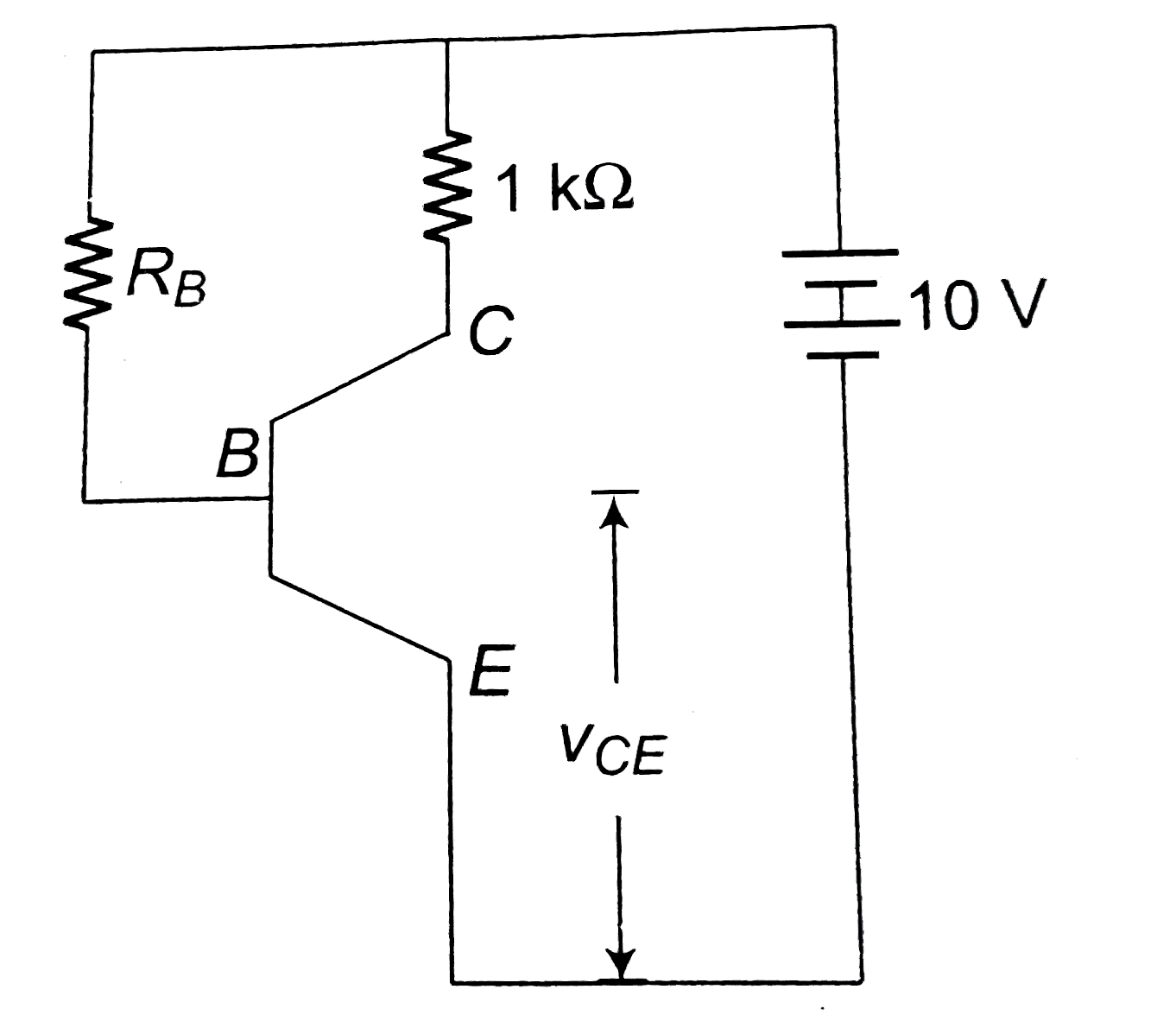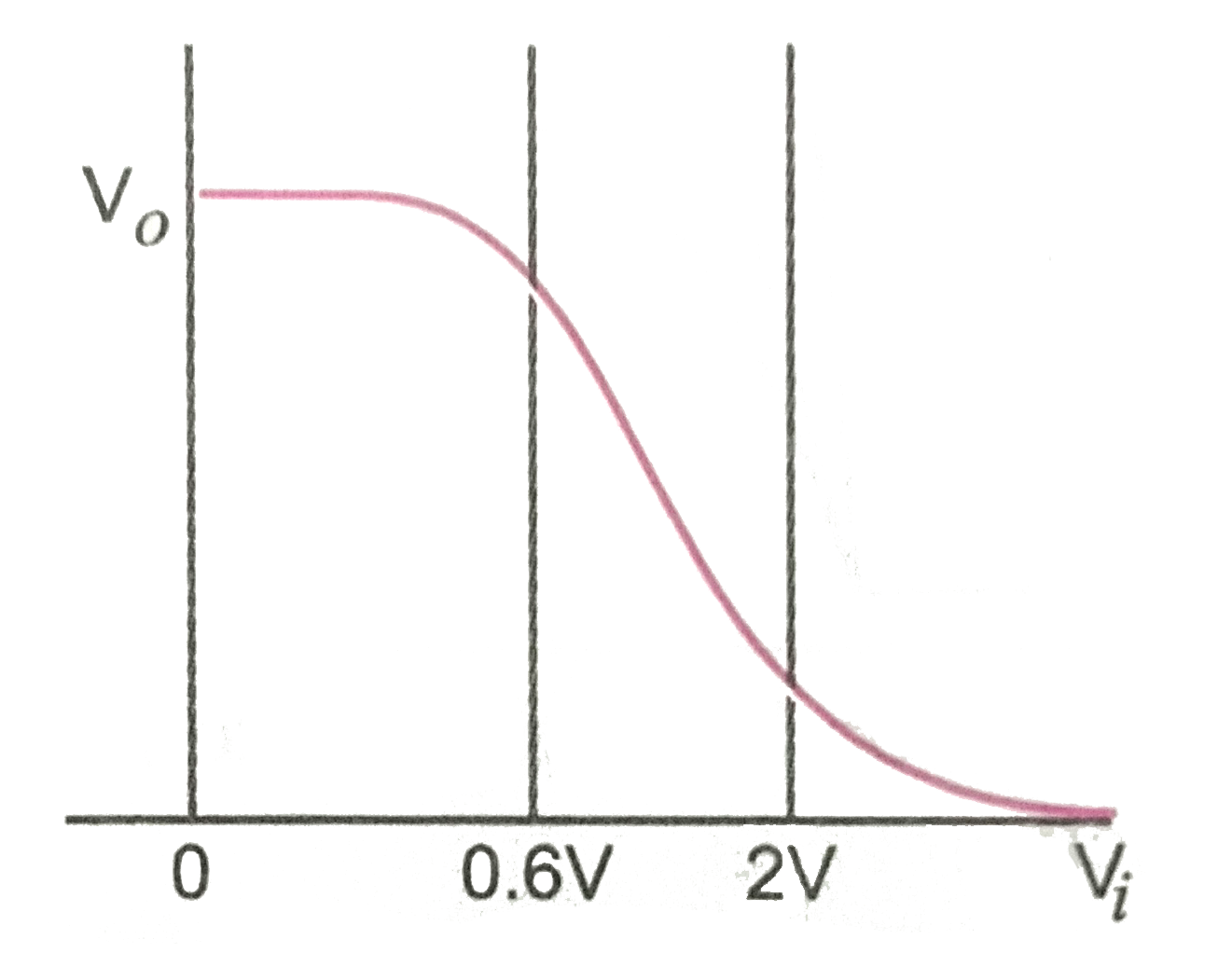Complete Solutions to Junction Transistor of chapter SEMICONDUCTOR ELECTRONICS : MATERIALS , DEVICES AND SIMPLE CIRCUITS of Class 12 book with complete answers and questions
| Class 12 | PHYSICS |
| Chapter | SEMICONDUCTOR ELECTRONICS : MATERIALS , DEVICES AND SIMPLE CIRCUITS |
| NCERT FINGERTIPS | Junction Transistor |
| Number Of Questions | 33 |
| Academic Year | 2023-24 |
The transfer characteristics of a base biased transistor has the operation regions, namely, cutoff, active region and saturation region. For using the transistor as an amplifier it has to operate in the
View SolutionThe emitter of transistor is doped the heaviest because it
View SolutionThe heavily and lightly doped regions of a bipolar junction transistor are respectively
View SolutionFor a transistor amplifier, the voltage gain
View SolutionAn oscillator is nothing but an amplifier with
View SolutionThe current amplification factor `alpha` of a common base transistor and the current amplification factor `beta`of a common emitter transistor are not related by
View SolutionIf `beta, R_L and r` are the ac current gain, load resistance and the input resistance of a transistor respectively in CE configuration, the voltage and the power gains respectively are
View SolutionIf `alpha and beta` are the current gain in the CB and CE configurations respectively of the transistor circuit, then `(beta-alpha)/(alphabeta)=`
View SolutionA transistor has a current amplification factor (current gain) of 50. In a common emitter amplifier circuit, the collector resistance is chosen as `5Omega` and the input resistance is `1Omega`. The output voltage if input voltage is 0.01 V is
View SolutionTwo amplifiers are connected one after the other in series (cascaded). The first amplifier has a voltage gain of 10 and the second has a voltage gain of 20 . If the input signal is 0.01 V , calcualte the output AC signal .
View SolutionThe amplifiers `X, Y` and `Z` are connected in series. If the voltage gains of `X, Y` and `Z` are `10, 20` and `30`, respectively and the input signal is `1mV` peak value, then what is the output signal voltage (peak value)
(i) if dc supply voltage is 10V ?
(ii) if dc supply voltage is 5V?
View Solutionwhat is the output signal voltage (peak value) if dc supply voltage is 5 V?
View SolutionIn n-p-n transistor circuit, the collector current is `10 mA`. If `90%` of the holes reach the collector, find emitter and base currents.
View SolutionA transistor connected in common emitter mode, the voltage drop across the collector is 2 V and `beta` is 50, the base current if `R_C` is `2 kOmega` is
View SolutionThe power gain for common base amplifier is 800 and the voltage amplification factor is 840. The collector current when base current is 1.2 mA is
View SolutionThe current gain for a common emitter amplifier is 69. If the emitter current is 7 mA, the base current is
View SolutionThe potential difference across the collector of a transistor, used in common emitter mode is 1.5 V, with the collector resistance of `3 kOmega`, the emitter current is [`beta- 50`]
View SolutionIn a common -emitter transistor amplifier, an increase of `50muA` in the base current causes an increase of `1.0mA` in the collector current . Calculat gain `beta`. What will be the change in emitter current? Also calculate current gain `alpha`
View SolutionFor a common emitter transistor amplifier, the audio signal voltage across the collector resistance of `2 kOmega` is 2 V. Suppose the current amplification factor of the transistor is 100, the base current if base resistance is `1 k Omega` is
View SolutionThe ac current gain of a transistor is 120. What is the change in the collector current in the transistor whose base current changes by `100 muA`?
View SolutionIn an n-p-n circuit transistor, the collector current is 10 mA. If 80% electrons emitted reach the collector, then
View SolutionA common emitter amplifier gives an output of 3 V for an input of 0.01 V. If `beta` of the resistance is 100 and the input resistance is `1 kOmega`. then the collector resistance is
View SolutionThe input resistance of a common emitter transistor amplifier, if the output resistance is `500 kOmega`, the current gain `alpha=0.98` and the power gain is `6.0625 xx 10^(6)` is
View SolutionIn the cuircuit shown here the transistor used has a current gain `beta=100`. What should be the bias resistor `R_(BE)` so that `V_(CE)=5V("neglect "V_(BE))`

View SolutionThe input resistance of a transistor is `1000 Omega` on charging its base current by `10 muA`, the collector current increases by 2 mA. If a load resistance of `5 kOmega` is used in the circuit, the voltage gain of the amplifier is
View SolutionA transistor has a current gain of 30. If the collector resistance is `6kOmega`, input resistance is `1kOmega`, calculate its voltage gain?
View SolutionIn a transistor connected in a common emitter mode `R_C = 4kOmega, R_1 = 1kOmega, I_C = 1mA` and `I_B = 20 muA`. Find the voltage gain.
View SolutionIn an n-p-n transistor `10^(10)` electrons enter the emitter in `10^(-6)`s. If 2% of the electrons are lost in the base, find the current transfer ratio and the current amplification factor.
View SolutionIf a change of `100 mu A` in the base current of an `n-p-n` transistor in `CE` causes a change of `10 mA` in the collector current, the `ac` current gain of the transistor is
View SolutionWhat is the voltage gain in a common emitter amplifier, where input resistance is `3Omega` and load resistance `24Omega` and `beta=61` ?
View SolutionAn amplifier has a voltage gain of 100. The voltage gain in dB is
View SolutionA transistor is operated in common emitter configuration at `V_C=2 V`. Such that a change in the base current from `100 muA` to `200 muA` produces a change in the collector current of 5mA to 10 mA. The current gain is
View SolutionFig.shows that transfer characteristics of a base biased CE transistor. Which of the following statements are true?

View Solution
Junction Transistor questions and complete solutions for chapter SEMICONDUCTOR ELECTRONICS : MATERIALS , DEVICES AND SIMPLE CIRCUITS of NCERT FINGERTIPS PHYSICS (HINGLISH) of Class 12
All Exercises from NCERT FINGERTIPS Class 12 PHYSICS SEMICONDUCTOR ELECTRONICS : MATERIALS , DEVICES AND SIMPLE CIRCUITS
- Application Of Junction Diode As A Rectifier
- Assertion And Reason
- Classification Of Metals, Conductors And Semiconductors
- Digital Electronics And Logic Gates
- Extrinsic Semiconductor
- Higher Order Thinking Skills
- Intrinsic Semiconductor
- Junction Transistor
- NCERT Exemplar
- P-N Junction
- Semiconductor Diode
- Special Purpose P-N Junction Diode